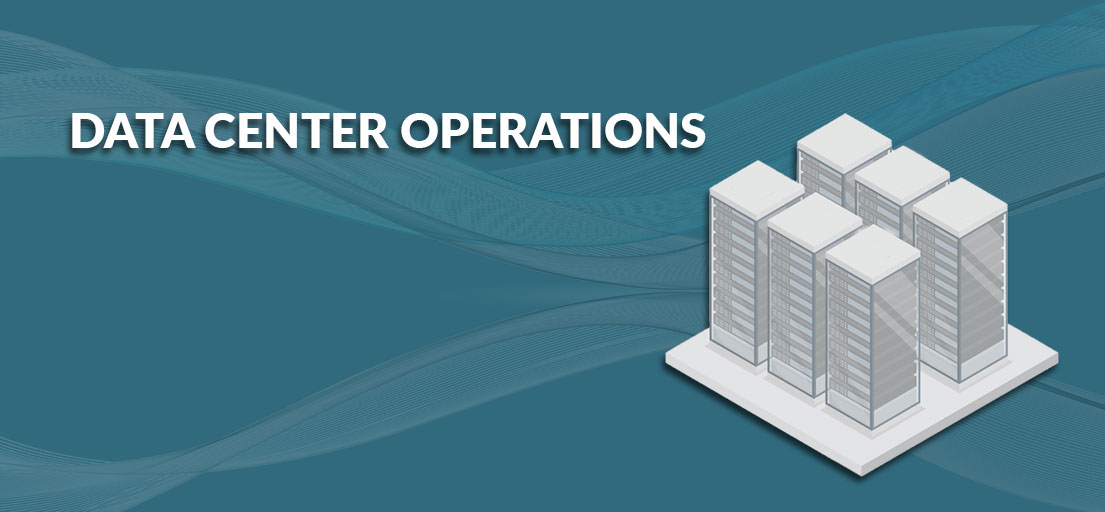Learn what are the leading Data Center Operations and management
At its core, a data center is a place that houses the computing and network equipment needed to gather, store and process large amounts of data and distribute them. The data center facilities are also crucial to supplying workers every day operating in a cloud storage system with access to vast volumes of data stored there. Here at The Email Shop, I will describe the data center operations and its three pillars.
Modern data centers, including servers and network connections, are composed of a variety of infrastructure components that allow access to server storage over the Internet. Users utilize a private data center, a shared data center, access data, and internet programs for day-to-day operations on data center equipment. Data centers share computer and computing capabilities across a wide range of customers in a shared cloud setting. Conversely, private cloud configurations limit access to one dedicated user’s data center architecture.
The modern data center is more than just a place to host the servers. These facilities need superior monitoring for continued service with their large capacity, networking, and cooling requirements. Sensor innovations and analysis may have somewhat changed the structure of the function of the data center. Still, direct control daily remains highly critical for the success of a data center.
Data center operations provide processes and workflows inside a data center. Data center operations services include network resources installation and maintenance, control of the data center, and power and cooling management systems.
3 Pillars of Modern Data Center Operations
The most advanced technological industry practices in the world include modern company data centers. Oddly enough, they are also frequently bastions of inefficiency, and infrastructure use is much less than 10% and 30% of servers in these installations are catatonic (using electricity but performing no useful information services). They still strive to keep pace with fast improvements in computing equipment deployments.
These issues resulted in a great deal of attention to improving the data centers operations management. While nearly every data center of companies has taken measures to upgrade its facilities, almost everyone is much less effective, costlier, and far less scalable. Such defects prohibit data centers from providing the businesses that operate them with full market profit.
The three foundations of current data center activities: are tracking, procedures, and physical principles.
Tracking
Running a data center includes precise in-time temperature, humidity, airflow analysis, and comprehensive inventories of machinery, vintage, and performance characteristics. Most DCIM tools provide this knowledge utilizing sensors scattered throughout each facility. DCIM also demands customization of any specific program, but over time it has gotten much more advanced.
The most advanced facilities use the RFID technologies to “tag” physical markings that connect any server at a specific location on the rack and monitor the equipment status “over the net” the most advanced installations use. RFID readers can help monitor equipment status on the central monitoring database as devices are transferred, and devices refresh the central database with new network information when equipment requirements change.
DCIM technology is like the automotive dashboard that provides real-time information about the car’s speed and engine temperature. Many administrators of data centers erroneously believe that they have what they need to handle their facilities if they have a DCIM tool, but nothing can be farther from the facts. These resources are necessary, but they are not adequate (because they have a clear view of the current state of the data center).
You Might also Like to Read: Data Center Rack Space Pricing | Dedicated Server Hosting
Procedures
Due to continuously evolving data center equipment, at times in unexpected ways, well-managed installations require well-defined and empirically-based protocols for computer and hardware architecture, rollout, maintenance, and as well as decommissioning.
RFID monitoring and network data collection techniques (as defined above) make it much easier to enforce procedures of precise inventory tracking. DCIM sensor measurements may facilitate the identification of data center operating procedures. Sensor data will in the fascinating case, be paired with machine learning algorithms to automate such processes in the data center, thus making human procedure design easier.
Such protocols are like basic laws that drivers use to safeguard protection, such as “slow down” or “turn the skid if you see a pedestrian.”
Physical Principles
The final of the three pillars involves applying knowledge of physical rules, engineering designs, and technical limitations that affect reliable power delivery and cooling in the plant. Due to frequent changes in data centers and the dynamics of air and heat flows, the design and operation of the data center need to use engineering simulation tools as well. This involves taking and translating the knowledge from monitoring instruments into software that simulates ventilation, electricity delivery, and heat transfer.
The best of these methods rely partly on advanced computer Fluid Dynamic Applications, vast power and airflow libraries with thousands of different IT equipment types, and visual analyzers to forecast the results of improvements in IT deployments with simplicity and accuracy. To ensure that actual data center measurements correctly characterize these computer models, so once caliber, they can be applied for the prediction without having to transfer or mount certain equipment of the effects of improvements to IT equipment configurations on airflow, temperature, performance, reliability, usable power, and cost.
You Might also Like to Read: London Data Centers | Top Colocation By The Email Shop
If correctly used, these modeling techniques are like a vehicle’s headlamps and simply indicate what lies ahead of us. They demonstrate the costs and uncertainties of maintenance plans and diligent monitoring and adequate practices to handle data center ops.
Final Words
Together, these three pillars are the most effective ways of providing the data center with market value. Without them, there can be no modern data center boss. Here at The Email Shop, I have discussed the 3 pillars or foundation of data center operations.









